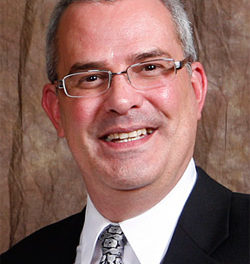 The general mood in the business travel industry is cautiously optimistic vs. the gloom felt by many just a couple years ago when travel was treated as a political punching bag. In October 2011, more than 2,000 international meeting professionals attended IMEX America, a new trade show for worldwide meetings, events and incentive travel held in Las Vegas.
The general mood in the business travel industry is cautiously optimistic vs. the gloom felt by many just a couple years ago when travel was treated as a political punching bag. In October 2011, more than 2,000 international meeting professionals attended IMEX America, a new trade show for worldwide meetings, events and incentive travel held in Las Vegas.
“Given the economic challenges facing many markets around the world, the mood on the show floor was perhaps – to some – surprisingly buoyant and full of anticipation,” said Carina Bauer, president of IMEX Group.
A favorable attitude is critical to the industry’s successful future. And it’s important to give credit where credit is due: The U.S. Travel Association and many leaders in the meetings industry have come together these past two years to defend and promote the value of business travel. They are more confident in conveying the message that investments in business travel translate to increases in business growth. Meanwhile, event planners and meeting suppliers are becoming more savvy in how they conduct business together to achieve those goals.
“Feedback suggests that planners are looking for ‘added value,’ according to many exhibitors, although predicting the market is increasingly difficult,” Bauer said. “Planners want keen pricing, but they are looking for additional creativity from suppliers and as many ‘extras’ as they can secure. These may include upgrades, small service extras or simply more favorable booking terms with fewer restrictions. There is also a sense that goodwill and strong relationships – reinforced by meeting face-to-face – are coming into play.”
It seems this is working. A review of trends in business travel and meetings during the last 12-18 months in several destinations reveals that the industry may have found a level of stability and some are projecting signs of growth.
Meetings and Events in Mexico
One of the most popular international destinations for meetings is Mexico where 23 million business travelers attended 197,400 meetings in 2010 (domestic and international). And it seems that Mexico remains poised to serve this industry. In August 2011, the Mexico Tourism Board reported a year on year increase in total tourism from 145 countries around the world.
This success in Mexico can be attributed to three advantages, according to Eduardo Chaillo, executive director meetings industry for the Mexico Tourism Board, Washington, DC. First, and most obvious, is the economic benefits of hosting meetings in Mexico, including its 0% on VAT for international meetings and overall value for the money. Second is its location. Mexico is reasonably a central point of access for attendees from North America and South America. Third is the number of industry sectors and expertise that is based there – automative, mining and energy, among others.
Meeting professionals pay attention to these factors. Where are they choosing right now? Mexico City is attractive to the associations market, Guadalajara is attracting the association and corporate market, Los Cabos is attracting corporate meetings, and Cancun is attracting corporate and association meetings. Emerging destinations in Mexico include Mazatlan and Merida.
Meetings and Events in Orlando
Orlando is another mature market. They hosted 51.4 million visitors in 2010, and 10 million of them were business travelers. Half of those were business travelers specifically for meetings and trade shows, including 1 million international business travelers. This, according to Gary Sain, president and CEO of Visit Orlando.
Given the number of hotels in the market, Orlando can certainly handle any sized group. But a few other factors work to Orlando’s advantage. First, it’s cost effective to fly there. Second, it is a safe, family-friendly location. And third, Orlando is a popular destination for medical trade shows, which is probably one of the fastest growing segments in the international meetings industry.
Future meetings being held in Orlando include the National Basketball Association All-Star Weekend (2012), the Association for Research in Vision and Ophthalmology (2015), Healthcare Information & Management System Society (2017). And Orlando has targeted marketing initiatives to visitors from Canada, Brazil, Germany, the UK and Ireland.
Meetings and Events in New Orleans
For New Orleans, the concerns created by Hurricane Katrina in 2005 and its devastation are in the past. With 8.3 million visitors in 2010 – nearly 23 percent of which were for business travel, meetings and events – New Orleans tourism has exceeded 2003 levels and revenues were at all time highs. And the number of meetings have generally been increasing; roughly 725 meetings in 2011 are expected to bring more than 850,000 convention and meetings visitors.
This level of success requires a commitment to the travel industry, as leaders for the New Orleans Convention and Visitors Bureau know. They have developed a master plan for tourism to attract 13.7 million visitors by 2018, the city’s 300th anniversary. Not only would that have positive effects on the local economy, it would grow 33,000 new jobs for the local economy.
While the vast majority of conventions held in New Orleans are hosted by U.S.-based organizations, many attract a high number of international attendees and exhibitors. And because New Orleans is a unique American city with a European feel (not to mention its tax-free shopping), it should continue to attract business travelers from emerging growth markets, including China, India and South America.
Meetings and Events in Montreal
Montreal is one of Canada’s top cities when it comes to international meetings and events. There were approximately 7.4 million visitors to Montreal in 2010, and that number is expected to increase to 7.5 million this year. More than 300 conventions are held here each year, and business travelers account for about 30% of total visitors (2.2 million this year).
These levels will likely remain steady, with overseas visitors growing by more than 2.2% this year. And for international meetings, Montreal is showing several signs of sustaining these levels for long term growth.
A few examples of future conferences in Montreal include the 2017 World Police and Fire Games, the he World Irish Dance Championships (2014), and the 30th International Epilepsy Congress (2013). In addition,Tourisme Montreal recently announced that it is offering financial incentives to organizers of science meetings in an effort to leverage its academic and reputation as a university city.
Meetings and Events in Las Vegas
When it comes to business meeting and convention cities in North America, all eyes give special attention to Las Vegas, and for good reason. Its reputation was probably the hardest hit by political and economic factors these past few years. But don’t bet against Las Vegas for the long term. Comparing year-over-year averages for the first eight months of 2011, convention business is up by 6.4% and the number of meetings held increased by 2.9%, according to data from the Las Vegas Convention and Visitors Authority (LVCVA).
“Las Vegas continues to see sign of recovery in the tourism sector, including our meetings and conventions market,” says Chris Meyer, CEM, CMP, vice president of sales for the LVCVA. “Most of our major trade shows have experienced growth this year, and according to our hotel partners, future bookings in the corporate and incentive markets look strong.”
To be sure, many issues remain for the international business travel, meetings and events industry. Will the U.S. address its VISA restrictions to increase access for international visitors? How should the use of technology complement live meetings? When will the industry redeem the image of incentive travel? Can the industry block the U.S. and other governments from continuing to increase taxes and fees on an already over-taxed traveler? And many more.
But if favorable international meetings industry feedback at IMEX America and local commitments to developing vibrant business events are any indication, perhaps the downward spiral in travel has finally leveled off for destinations like Las Vegas and elsewhere in North America.
“Meetings have been extremely important to reviving our economic engine,” said Kelly Schulz, spokesperson for the New Orleans CVB. “And many corporate and association groups have added “voluntourism” components to their meetings – by volunteering in neighborhoods destroyed by Katrina as a team-building or post-meeting project.”



